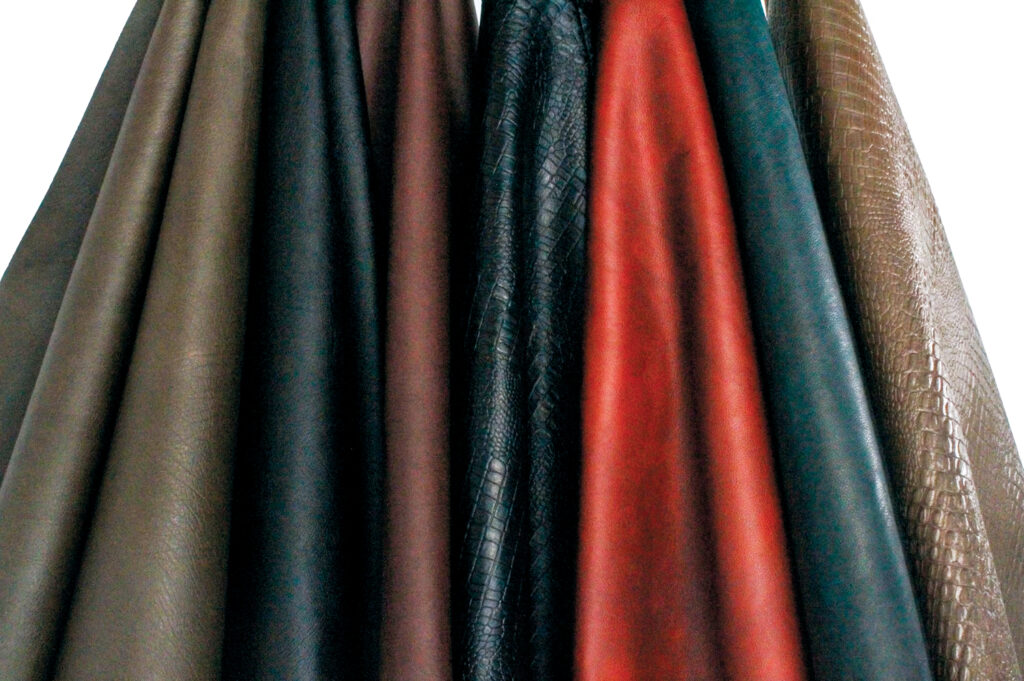
In May, Polybion™, a Madrid, Spain, biomaterials company, released its Celium™ Swatch Sampler collection in a variety of tones, marbled patterns and embossed styles to show the leatherlike material’s versatility. The cultivated cellulose textile is fabricated via a process where bacteria feed on agricultural fruit waste and was among the winners of the Redesign Everything Challenge in May, which was launched by What Design Can Do and the IKEA Foundation.
The material is produced in the company’s 14,000-square-foot solar-powered plant in Central Mexico that was launched in 2022. It’s designed to produce 1.1 million square feet of material annually.
It can be tanned with chromium-free formulations and has potential uses in fashion, sportswear and automotive markets. Design and thickness can be tailored to the product.

The company notes on its website that its production is EPA-, REACH- (a European standard) and ZDHC-compliant and concentrated within a 30-mile radius of the plant. Polybion says that there is enough fruit waste to produce 160 million square feet of Celium annually.
The company began in 2014, founded by brothers Axel and Alexis Gómez Ortigoza and their friend Bárbara González Rolón, who has a Ph.D. in materials science. At first, they started investigating mycelium, which Axel saw the potential of while participating in a synthetic biology competition at the Massachusetts Institute of Technology. Polybion founded the first vertically integrated mycelium pilot plant in Latin America in 2016 but moved to bacterial cellulose production in 2019.
 TEXTILES.ORG
TEXTILES.ORG


